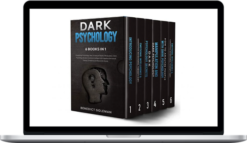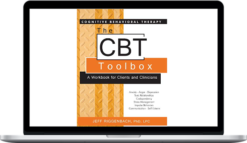NICABM – Working with Family Estrangement
$97.00 $39.00
»Delivery: Within 21 days
Description
NICABM – Working with Family Estrangement
Navigating No Contact: Helping Clients Process Family Estrangement
EstrangementWhen a client is estranged from a family member who used to mean the world to them . . .
. . . it can evoke a very specific trauma that many of us weren’t trained to work with.
And so because of that, we often miss the key sources of tension that sustain a client’s feelings of anger, fear, guilt, or shame.
Beyond that, there are some common well-intentioned mistakes (like being too reassuring) that can make the situation worse.
So to help you more skillfully navigate the murky waters of estranged family relationships, we put together this brand-new workshop.
Working with Family Estrangement
In this workshop, Joshua Coleman, PhD will share the latest research on what causes family estrangement and what treatments are most effective.
Here’s what he’ll get into:
- Strategies to help parents and adult children reconcile
- What to do (and not do) when one parent pits the child against the other parent
- Key differences between estrangement and alienation that can impact your approach
- Ten “rules” for healthy parent-adult child relationships
- How to work with estrangement when mental illness is a factor
- When sexuality or gender identity impact estrangement: three principles for treatment
Course Instructor
Joshua Coleman, PhD is a licensed psychologist and a Senior Fellow with the Council on Contemporary Families – an organization dedicated to providing the latest research and best-practice findings about American families.
He is a contributor to TIME, The New York Times, The Atlantic, The Wall Street Journal, Scientific American, The Washington Post, and many more national publications.
Joshua is the author of several books, including Rules of Estrangement: Why Adult Children Cut Ties and How to Heal the Conflict; When Parents Hurt: Compassionate Strategies When You and Your Grown Child Don’t Get Along; and The Marriage Makeover: Finding Happiness in Imperfect Harmony.
More courses from the same author: NICABM
Delivery Policy
When will I receive my course?
You will receive a link to download your course immediately or within 1 to 21 days. It depends on the product you buy, so please read the short description of the product carefully before making a purchase.
How is my course delivered?
We share courses through Google Drive, so once your order is complete, you'll receive an invitation to view the course in your email.
To avoid any delay in delivery, please provide a Google mail and enter your email address correctly in the Checkout Page.
In case you submit a wrong email address, please contact us to resend the course to the correct email.
How do I check status of my order?
Please log in to HealthcareCourse account then go to Order Page. You will find all your orders includes number, date, status and total price.
If the status is Processing: Your course is being uploaded. Please be patient and wait for us to complete your order. If your order has multiple courses and one of them has not been updated with the download link, the status of the order is also Processing.
If the status is Completed: Your course is ready for immediate download. Click "VIEW" to view details and download the course.
Where can I find my course?
Once your order is complete, a link to download the course will automatically be sent to your email.
You can also get the download link by logging into your HealthcareCourse account then going to Downloads Page.
Related products
Total sold: 2









